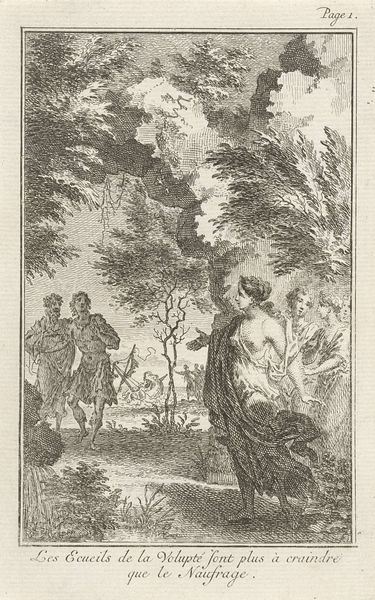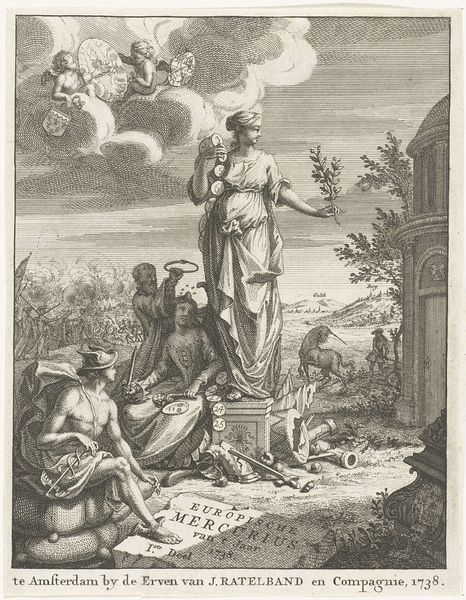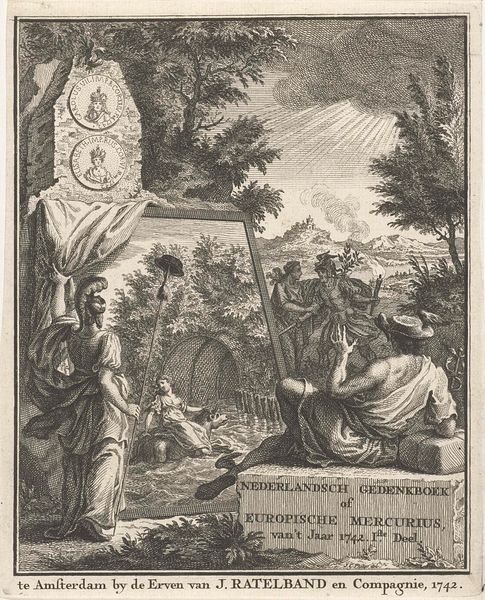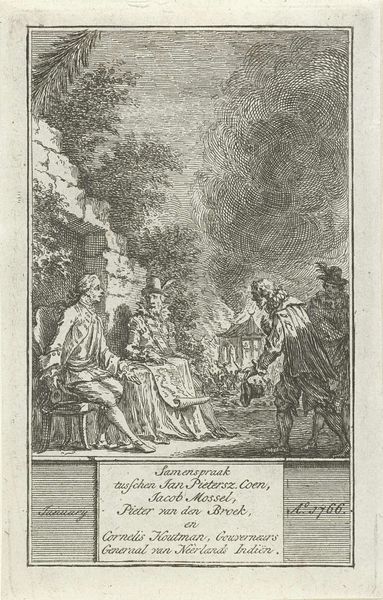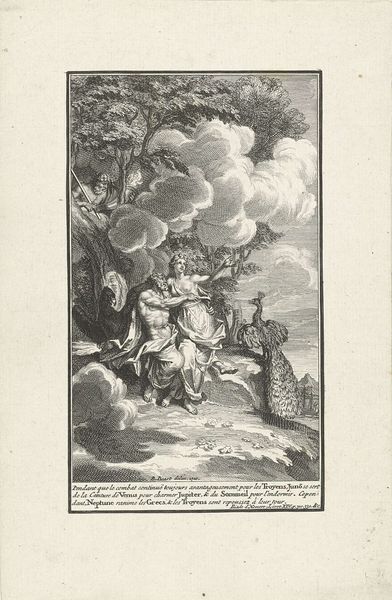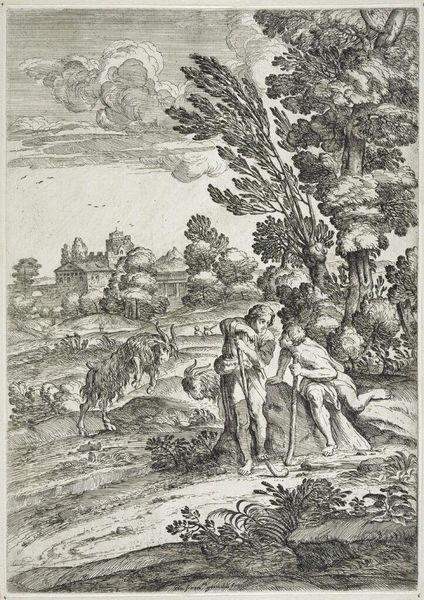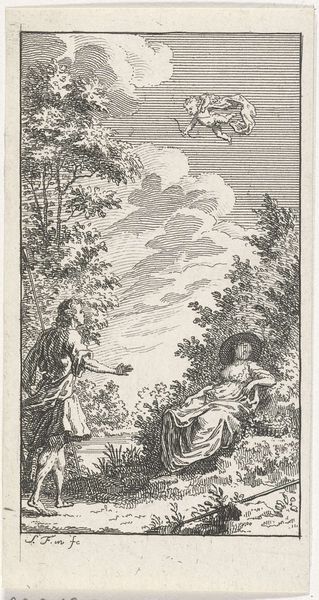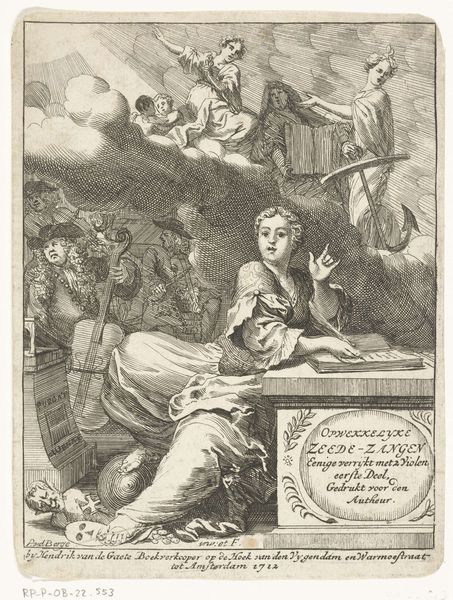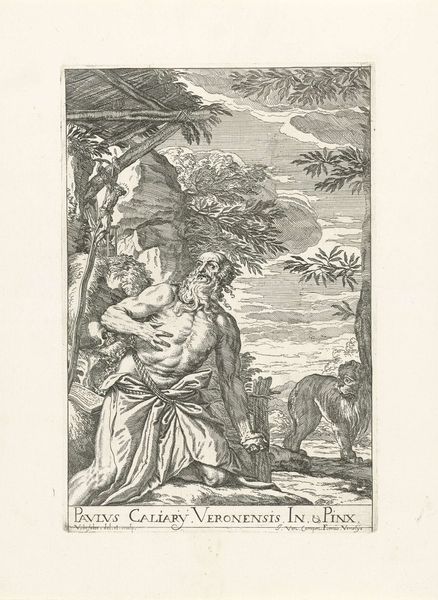
print, engraving
#
allegory
#
baroque
#
symbol
# print
#
pen illustration
#
old engraving style
#
line
#
history-painting
#
engraving
Dimensions: height 175 mm, width 132 mm
Copyright: Rijks Museum: Open Domain
Curator: This print, serving as the title page for the “Europische Mercurius” of 1741, presents an elaborate allegorical scene characteristic of the Baroque period. Editor: The immediate impression is one of conflicted messages; its detailed lines and swirling composition, combined with figures brandishing swords next to a woman holding a palm, seem to both herald progress and warn against the dangers of conflict. Curator: Indeed. Note the prominence of Mercury himself seated on the left, a subtle allusion to commerce and communication given his symbolic role, which speaks to the aspirations of the journal to report on affairs. We see classical references combined with contemporary issues reflected through various iconographic choices. Editor: But those “contemporary issues” were deeply entwined with colonialism and its attendant exploitation. The imagery strikes me as valorizing Dutch mercantile power while glossing over the realities of those historical conditions and imperial conquests. It speaks volumes, literally, that “history” is inscribed and sold through these systems of power. Curator: Of course, but examine how the engraving is designed; observe the balanced triangular composition achieved through placement of the figures and even the cloud formations, guiding the eye down toward the textual declaration. Also the detail and delicacy of lines indicating depth; these things speak to the skill of the engraver and printing traditions. Editor: I'd say the lines are actively constructing a particular view of the world, aren't they? Silesia armed for war is poised directly over the promise of Mercury; so who actually benefits from free exchange when such conflict is baked into the equation? The symbolism, I suggest, is more reflective of the political landscape that it purports only to report on. Curator: Perhaps. The artist is negotiating complex ideological positions via recognizable visual strategies...a reflection of Baroque-era thinking. Editor: Exactly! Understanding the art historical position doesn't exclude reading critically into this page. I believe we've revealed something essential today, about this image's appeal and complexities.
Comments
No comments
Be the first to comment and join the conversation on the ultimate creative platform.
